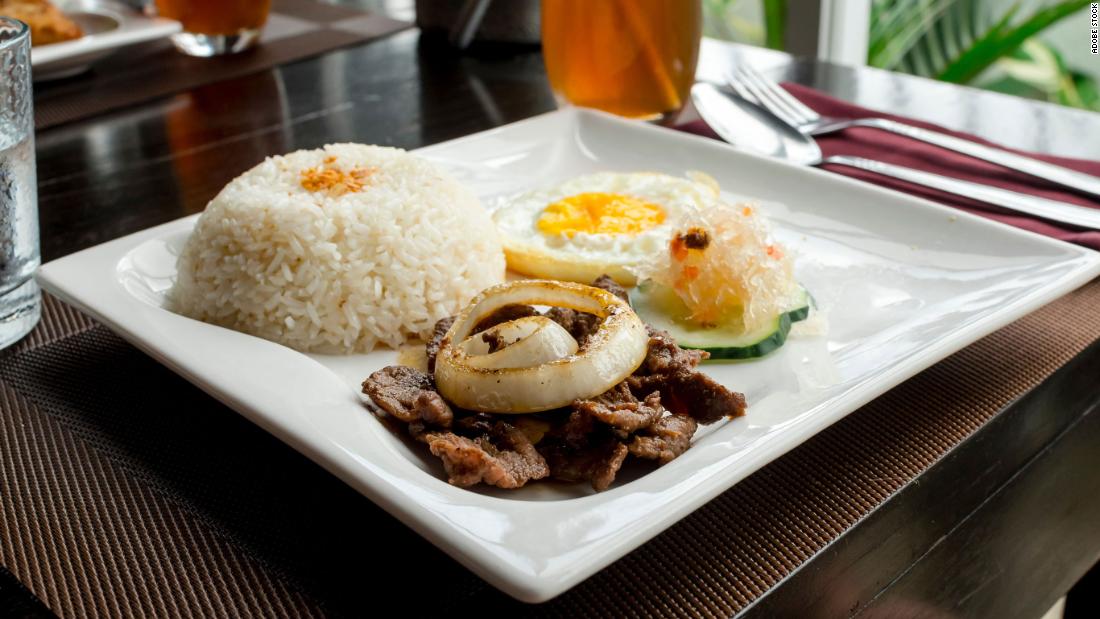Filipino cuisine in general draws influences from other cultures — namely Mexican and Chinese — as a result of trade, and as a result of occupation and colonization such as American and Spanish cultures.
After foods like canned meats, breads and pastries, chocolate, spices, sausages and more came to the islands, Filipinos put their own spin on these dishes.
These are the first-thing-in-the-morning delicious breakfast foods and drinks that will start the day in style.
Sinangag at itlog (silog)
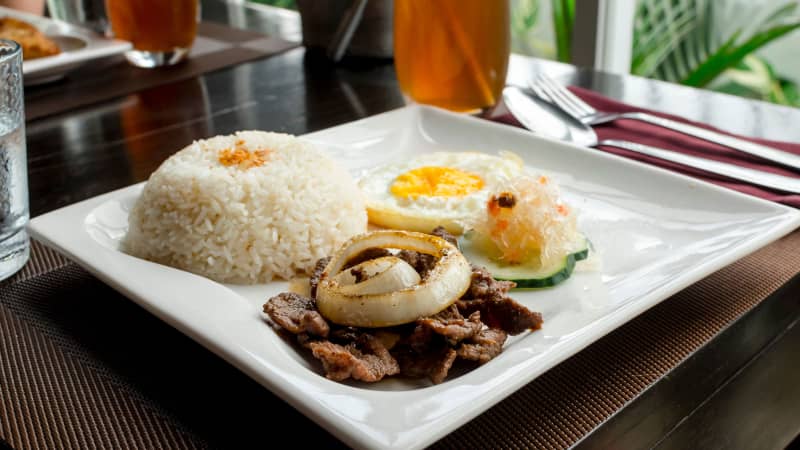
No matter what the protein may be, a side of salted tomatoes, sawsawan (vinegar for dipping) and perhaps some banana ketchup typically round out the meal.
Adobe Stock
The basis of most Filipino breakfasts is sinangag, or garlic fried rice. Loaded with fragrant bits of crisp fried garlic, sinangag is a simple dish that comprises just a handful of ingredients — garlic, salt, pepper, oil and rice — but it requires a lot of technique and precision to ensure it’s cooked properly.
The garlic must be fried to a specific point of golden brown but not burnt for the right level of crispiness; the rice should be a day old to get the perfect texture; and the salt level must enhance it all — but not too much because sinangag is typically paired with extremely flavorful proteins that are marinated, cured or salted.
Sinangag is typically served with sunny-side-up eggs (itlog), so it’s referred to as sinangag at itlog, which is then shortened to silog.
The name of the dish will depend on the type of meat or fish used — for example, if Spam is used then the dish is Spamsilog. From hot dogs to corned beef, there are many options for silogs.
Tocino
Tocino is Spanish for bacon, but Filipino tocino is a sweet cured pork (and sometimes chicken) that’s pan-fried in its own marinade until it’s caramelized.
It originated in the province of Pampanga, widely regarded by many as the culinary capital of the Philippines.
Longanisa
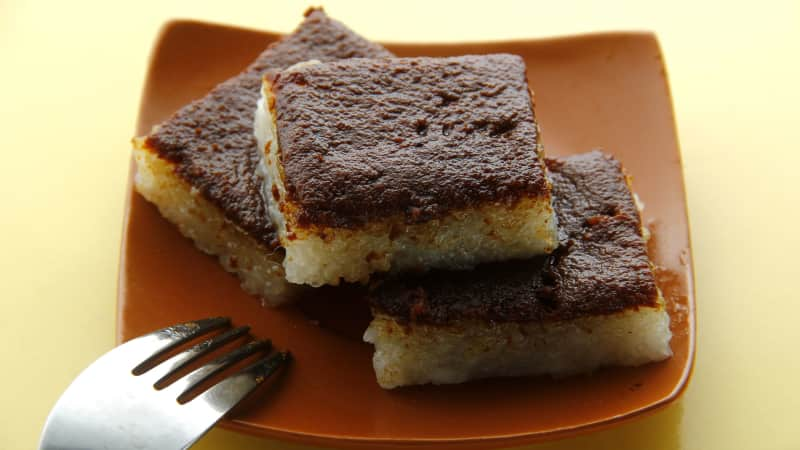
In the Philippines, rice cakes aren’t hard round discs that westerners might see in a health food store.
Adobe Stock
Longanisa takes its name from the Spanish longaniza, thin, long pork sausages.
Filipino longanisa fall into two general categories: “de recado,” heavy on the garlic and spiced; and “hamonado,” or jamon, the Spanish word for ham.
Depending on the region, longanisa varies from the type of meat used to the preparation. In Vigan, on the west coast of Luzon on the northern end of the country, the longanisa is garlicky and spicy with a touch of acid from sugarcane vinegar. The sausages are pan-fried until caramelized.
Kakanin
There are many kinds of kakanin (rice cakes), but there are a few essential ingredients that are common among most.
The most obvious is a glutinous sweet rice called malagkit. This grain is very starchy, lending a sticky quality that is synonymous with kakanin. Other essential ingredients are gata or coconut milk and sugar — ideally brown sugar, which gives more depth of flavor than white sugar.
Extracts like pandan, ube (purple yam) and vanilla all bring nuance and flavor to kakanin. Some of the most popular kakanin include suman (sticky rice cooked with coconut milk and sugar steamed in banana leaves) and biko (a caramelized sticky rice cake).
One of the most beloved kakanin is bibingka, which is made with ground rice, coconut milk and egg and topped with salted egg and grated cheese for that signature Filipino salty-sweet combination. It also goes well with a steaming cup of salabat (more on that later).
Tapa
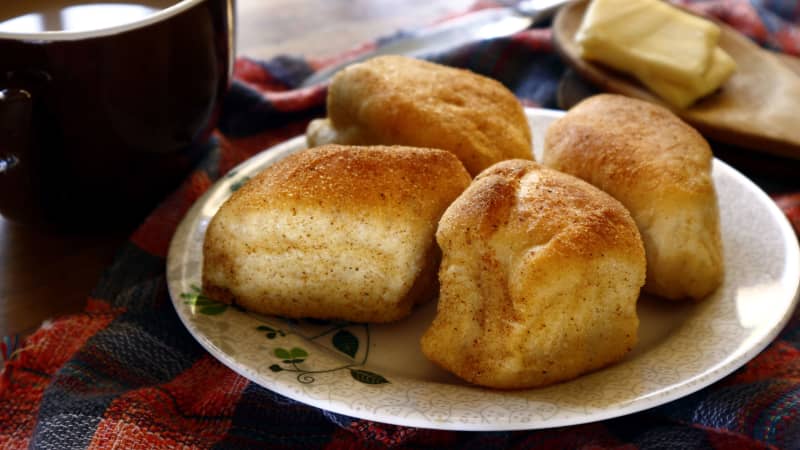
Despite its name, pandesal is actually on the sweet side.
Adobe Stock
Typically made of thinly sliced beef marinated in soy sauce and calamansi (a citrus fruit that tastes as if lemon, lime and orange merged to create one tart yet sweet superfruit), tapa is typically either grilled or pan-fried.
As with many other Filipino preparations like adobo — a technique that entails preserving food in vinegar and soy sauce to prohibit the growth of bacteria — tapa was a popular method to extend the shelf life of meats by curing or drying, almost like a beef jerky. Now, it’s typically another delicious silog option.
Pandesal
With a golden brown crust surrounding a pillowy and fluffy interior, these lightly sweet bread rolls are one of the most popular breads in the Philippines.
The word pandesal comes from the Spanish term pan de sal, which translates to “bread of salt,” even though pandesal aren’t salty. They do, however, have a unique texture because before they’re baked they’re rolled in bread crumbs.
These yeast rolls can be stuffed with cheese, jam, eggs or meat but they are good just on their own — and dipped into coffee or hot chocolate (tsokolate).
Corned beef
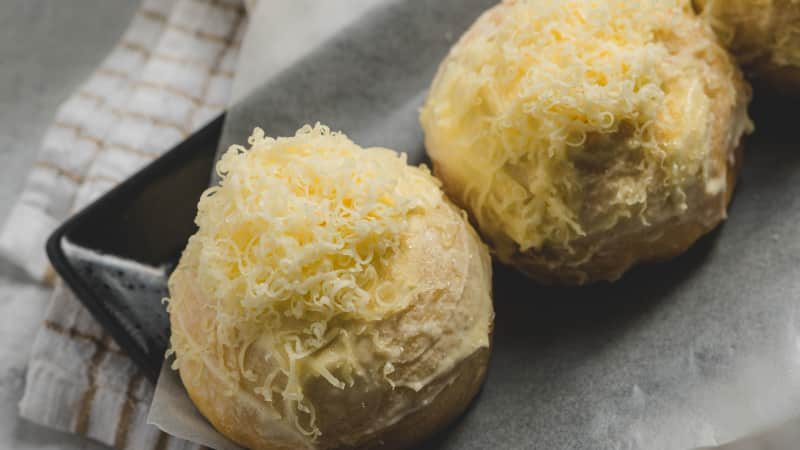
Some people call ensaymada the Filipino take on a brioche.
Sherwin Dela Peña/Adobe Stock
American corned beef, along with other similar canned products like Spam, sardines and Vienna sausages, became popular in the Philippines during periods of occupation such as at the turn of the 20th century after the Philippine-American War and World War II.
Filipinos adopted and adapted it into the culinary repertoire by sauteing the canned meat product with onions and potatoes to make ginisang corned beef for cornsilog.
Ensaymada
This fluffy, buttery bread traces its roots to a coiled bread named ensaimada de Mallorca from the Balearic island of Mallorca, Spain. The flat, flaky bread was laced with lard, which is called saim in Mallorqui, a Catalan dialect.
Featuring decadent layers of butter and sugar, ensaymada’s sweetness is perfectly balanced with the saltiness of queso de bola, or Edam, a semi-hard cheese from the Netherlands.
Daing na bangus
Daing is the preparation process for fish and seafood.
Typically, fish is salted and sun-dried but it can also be marinated in vinegar, salt, garlic and pepper, usually overnight. Bangus, or milkfish, is butterflied, marinated and pan-fried.
Champorado

Arroz caldo is partly Spanish, partly Chinese and 100% Filipino.
Adobe Stock
Mexican champurrado, a hot chocolate made with milk and masa harina, came to the Philippines in the late 17th century, the same time as chocolate.
Instead of masa harina, Filipinos swapped in rice (naturally) to make a rich chocolate breakfast rice porridge that’s a beloved treat.
Made with malagkit (sticky rice) and tablea (tablets of raw cacao that have a bittersweet, earthy and almost savory flavor), champorado is cooked for a long time until it gets a creamy consistency.
It’s often topped with a swirl of milk (condensed or evaporated) and a smattering of tuyo — small salted and dried silver fish — which offers a salty counterpoint to the richness and sweetness.
Lugaw/Arroz Caldo
The ultimate Filipino comfort food, lugaw is a savory rice porridge that likely made its way to the Philippines via Chinese congee.
The most basic versions are punctuated by ginger, with the rice cooked long and slow with chicken until the grains melt into a thick and velvety consistency. The porridge can be simply flavored with a couple dashes of patis (fish sauce) and garnished with scallions and fried garlic.
Other toppings include a hard-boiled egg and tokwa’t baboy (fried tofu and boiled pork), which can be added to make it heartier.
When the Spanish came to the Philippines, they gave lugaw another name, arroz caldo, which means “hot rice,” while putting on their own spin by adding saffron.
Torta
Filipinos have their own version of omelets called torta, and they can vary widely depending on the filling, such as ground meat, sardines and dulong (silver fish). One of the most popular variations is tortang talong, which is made of eggplant.
The eggplants are grilled or roasted, then battered with beaten whole eggs and pan-fried.
Tortang talong can be eaten alone or paired with sinangag and salted tomatoes.
Barako
There is a strong kape (coffee in Tagalog) culture in the Philippines, with coffee consumption on the rise.
Kapeng barako is known for its strong taste (perfect for a morning pick-me-up). Barako is a Tagalog word that means strong man, and kape means coffee, hence the term kapeng barako.
According to data from Fitch Solutions, each Filipino expected to drink 3.78 kilograms of coffee every year by 2025, an increase from an estimated 3.05 kg per capita in 2020.
But coffee goes even further back than current trends; the country is one of the world’s oldest coffee-producing nations. Brought to the Philippines and planted in Lipa, about 85 kilometers (53 miles) south of Manila, by the Spaniards, barako coffee refers to a varietal from the Batangas province, where Lipa is located.
Tsokolate
Hot chocolate is another product that stems from Spanish colonial times. Tsokolate is made from tablea de cacao (chocolate tablets) that are dissolved into hot water.
Tsokolate can be lightly sweetened with sugar and served with a little milk or cream, but the essential part is the frothiness. After the chocolate is dissolved, the hot chocolate is mixed using a batidor, a whisk-like baton.
Salabat
Made with fresh ginger steeped in hot water, salabat is a soothing and healing tea that is often a go-to remedy during cold and flu season. It’s also a breakfast alternative to coffee.
Photo research by Rico Cruz
